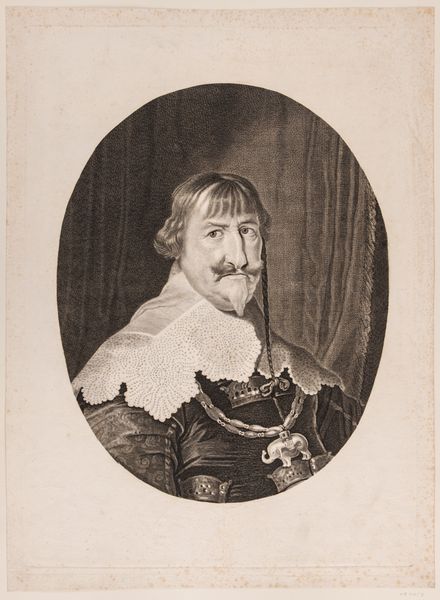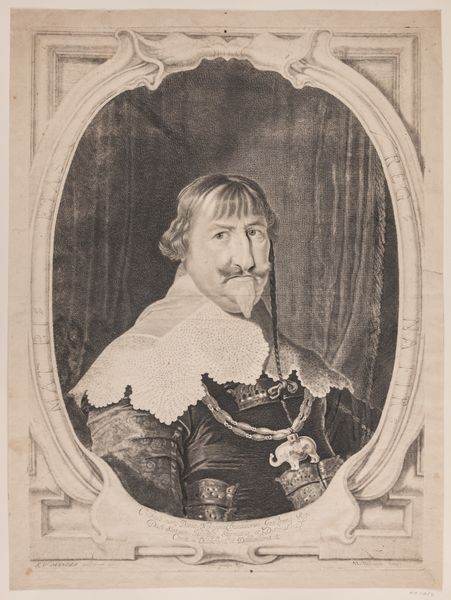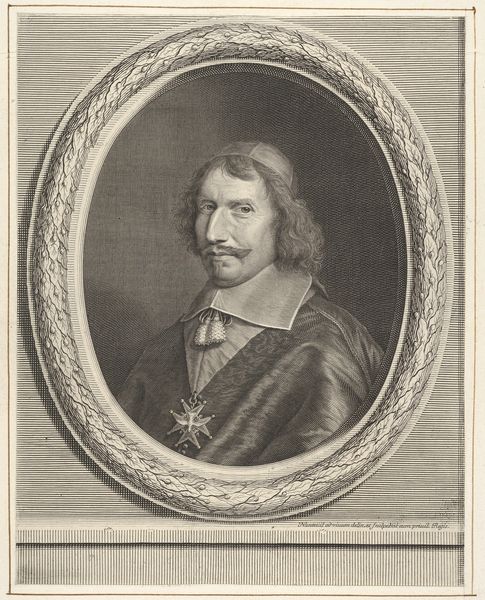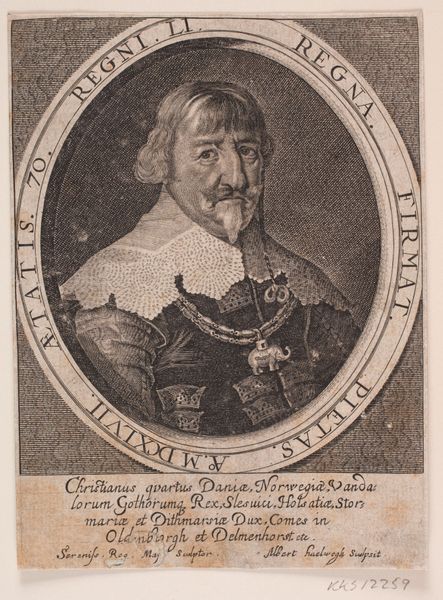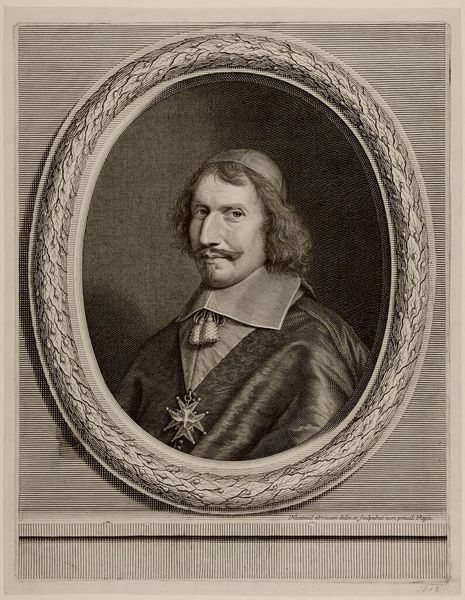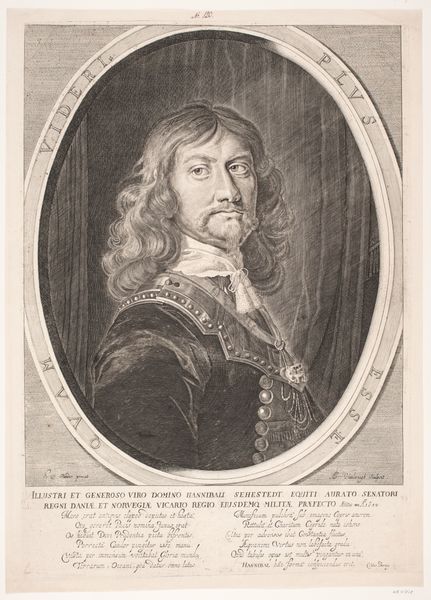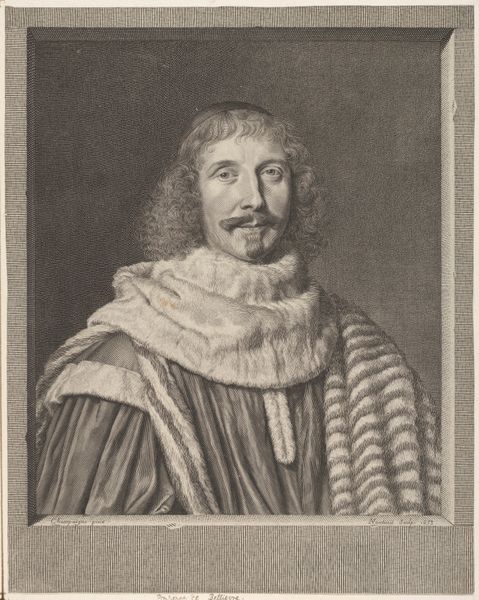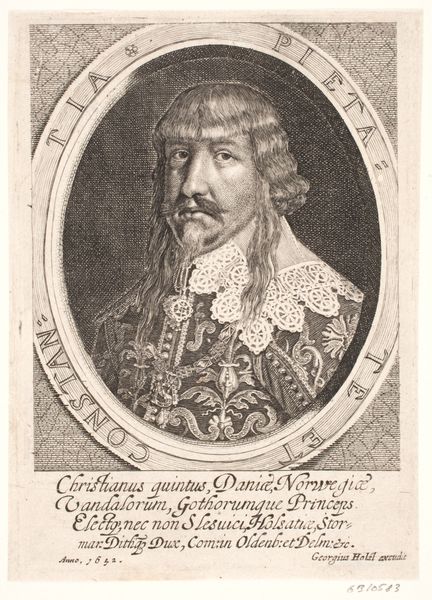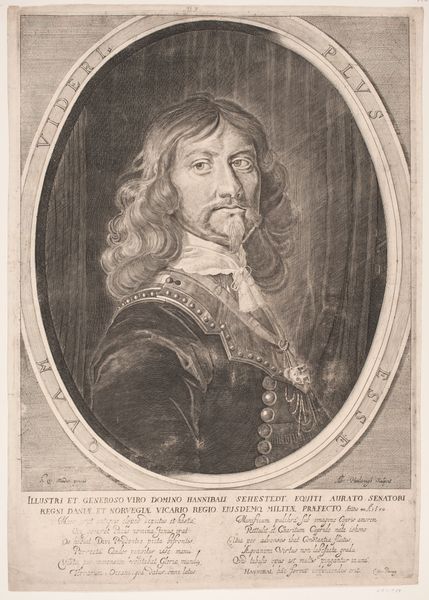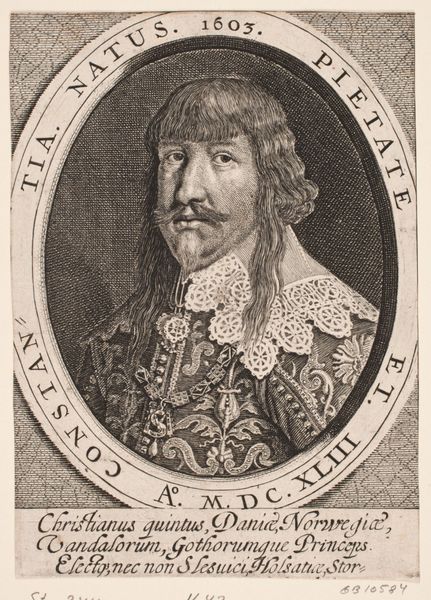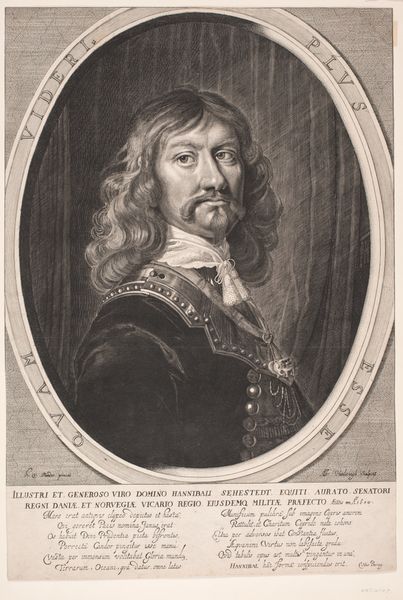
print, engraving
#
baroque
# print
#
history-painting
#
engraving
Dimensions: 555 mm (height) x 405 mm (width) (plademaal)
Curator: Before us is a portrait of Christian IV, crafted between 1643 and 1647 by Albert Haelwegh. It’s an engraving, currently housed at the Statens Museum for Kunst. Editor: The starkness of the engraving gives it an almost severe quality, despite the ornate frame. You immediately notice the tight lines etched into the metal, how the varying density conveys shape and light... It feels very controlled, and stately, doesn't it? Curator: Indeed. The formal elements create that effect. The composition adheres to a hierarchical structure: the King's gaze is direct and unwavering, creating a psychological effect. The contrast accentuates the meticulously rendered lace collar and the gleam of his armor. It signifies power and the established social order. Editor: And let's not forget the tangible process. Consider Haelwegh, carefully using his burin to carve these fine lines into a copper plate. This act, almost industrial, resulted in multiples of this regal image. It highlights the political maneuver to solidify power by dissemination through these very prints. They bring the royal image into merchant homes, battlefronts, maybe even taverns. Curator: From a structural perspective, consider the symbolic weight of the oval frame, a classical motif implying the timeless nature of kingship and its confinement. Note how it contrasts with the baroque extravagance, that almost excessive dynamism and opulence... there is a kind of tension created here. Editor: But the lines of that frame, the physical boundaries… someone, somewhere, printed this, pulling the matrix from the plate, likely with heavy machinery and an entire workshop infrastructure around them. We have an idealized image wrapped in a reminder of the labor it took to get that image into circulation. How many hands touched this print before it made its way to a museum wall, huh? Curator: It's a superb tension that really speaks to the duality inherent in such a potent symbol of authority: the divine right of kings tempered with real world administration of kingdom. Thank you, that added a lot for me to consider. Editor: The beauty, and maybe the tension, lies in understanding where, why, and how these pieces were actually brought into being and used. Good food for thought indeed.
Comments
No comments
Be the first to comment and join the conversation on the ultimate creative platform.
